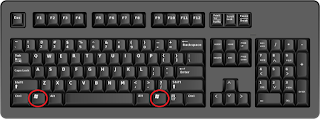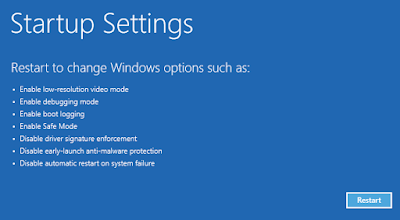1NUFhwLSmJPnjBNyjtuFPje54UG9AH1Ruc
Effective Way To Remove 1NUFhwLSmJPnjBNyjtuFPje54UG9AH1Ruc
1NUFhwLSmJPnjBNyjtuFPje54UG9AH1Ruc related similar infections| Ransomware | JobCrypter Ransomware, Kasiski Ransomware, FBI System Failure Ransomware, Mircop Ransomware, VenusLocker Ransomware, RaaS Ransomware, JohnyCryptor Ransomware, CryptoBit Ransomware, Legioner_seven@aol.com Ransomware, Buddy Ransomware |
| Trojan | Win32/Olmarik, Phreak Trojan, Trojan.Fakepop.A, Trojan.Win32.Clicker!BT, VB.afn, Trojan.Sirefef.N, TROJ_PIDIEF.WM, Trojan.Horst.AD, Malware.Gammima!rem, JAVA_DLOAD.ZZC |
| Adware | Adware.Vapsup.kz, 2YourFace, AdRotator, Kaq.Pagerte Pop-Ups, FindSpyware, ShopForGood, Fate, Tatss |
| Browser Hijacker | Asafebrowser.com, Iamwired.net, Ultimate-search.net, Sammsoft Toolbar, BrowserModifier.ClientMan, Suspiciouswebsiteblock.com, CoolWebSearch.olehelp, Ecostartpage.com, Resultoffer.com |
| Spyware | Spyware.WebHancer, Tool.Cain.4_9_14, CommonSearchVCatch, IMDetect, 4Arcade PBar, Spyware.BroadcastDSSAGENT, MessengerBlocker, SpySnipe, MediaPipe/MovieLand, Qvdntlmw Toolbar, CrawlWSToolbar |
Easy Steps To Uninstall 1NUFhwLSmJPnjBNyjtuFPje54UG9AH1Ruc From Infected OS
1NUFhwLSmJPnjBNyjtuFPje54UG9AH1Ruc is detected as a perilous OS threat which can harm your OS data and files very badly. It intrudes your OS silently and secretly so that you will not identify its presence easily and it can spread itself as much as possible. It can corrupt your data and make it inaccessible. Moreover, it can cause your OS to degrade its performance and applications to respond slowly.
You can infect your OS in many ways like when you open a spam email, visit some unknown and untrusted site, clicking malicious ads or pop-ups and many other ways. But one important method used by 1NUFhwLSmJPnjBNyjtuFPje54UG9AH1Ruc is bundling method in which it gets installed directly with the installation of free downloads. On its arrival into the system, it can almost disturbs the internal settings and functioning of the OS. Hence, if you find such malware into the OS, you need to Uninstall it.
Guide 1 : Do Away With 1NUFhwLSmJPnjBNyjtuFPje54UG9AH1Ruc From Chrome In OS
Guide 2 : Do Away With 1NUFhwLSmJPnjBNyjtuFPje54UG9AH1Ruc From Control Panel In OS
Guide 3 : Do Away With 1NUFhwLSmJPnjBNyjtuFPje54UG9AH1Ruc From Registry Entry In OS
Guide 4 : Do Away With 1NUFhwLSmJPnjBNyjtuFPje54UG9AH1Ruc From Task Manager In OS
Guide 5 : Guides To Start OS In Safe Mode
Quick Steps To Effectively Uninstall 1NUFhwLSmJPnjBNyjtuFPje54UG9AH1Ruc From Your OS
Guide 1 : Do Away With 1NUFhwLSmJPnjBNyjtuFPje54UG9AH1Ruc From Chrome In OS
From Internet Explorer -
- Click on Gear icon to open Tools menu in the Internet Explorer window.
- Click on Manage Add-ons option.
- Goto Toolbars and Extensions tab.
- Locate 1NUFhwLSmJPnjBNyjtuFPje54UG9AH1Ruc related add-ons - > Disable button.
- Click More information button and finally click on Uninstall button to completely Uninstall 1NUFhwLSmJPnjBNyjtuFPje54UG9AH1Ruc.

From Google Chrome -
- At first, launch the Google Chrome browser.
- Click on gear icon present in your browser to open Chrome menu.
- Click on Tools option.
- Click on Extension.
- Select all unwanted extensions.
- Click on trash bin icon to Uninstall 1NUFhwLSmJPnjBNyjtuFPje54UG9AH1Ruc.

From Mozilla Firefox -
- Click on the Menu icon present at the top right corner of the browser.
- Select Add-ons option.
- In the Add-ons window, choose the Extensions or Appearance panel.
- Select add-on related to 1NUFhwLSmJPnjBNyjtuFPje54UG9AH1Ruc which you want to Uninstall.
- Click the Remove button.
- Click Restart if it asks.

From Microsoft Edge -
- Click on More (...) icon and click Settings then.

- Now, select A specific page or pages under the Open with option.
- Again, select Custom option.
- Type the URL of the page you want to set as your browser's default homepage.

Guide 2 : Do Away With 1NUFhwLSmJPnjBNyjtuFPje54UG9AH1Ruc From Control Panel In OS
For Windows XP
- Click on Start button and click Control Panel.

- Select Add or Remove Programs option.

- Find and Uninstall 1NUFhwLSmJPnjBNyjtuFPje54UG9AH1Ruc related programs in the window that appears.

For Windows 7
- Press Window key present on the keyboard.

- Click Control Panel option from the menu.

- A Control Panel window appears from where click on Programs option.

- Select executable file of 1NUFhwLSmJPnjBNyjtuFPje54UG9AH1Ruc.
- Click on Uninstall option.

For Windows 8
- Open run box by pressing Window+R keys together.

- Type control panel and hit Enter key.

- Click on Uninstall a Program.

- Then select all the programs related to 1NUFhwLSmJPnjBNyjtuFPje54UG9AH1Ruc.
- Click Uninstall option.

For Windows 10
- Click on Start button.
- Select Settings option present in the bottom left corner of the screen.

- Select System option under Setting.

- Click on App & Features option.

- Now, Uninstall all the unwanted program.

Guide 3 : Do Away With 1NUFhwLSmJPnjBNyjtuFPje54UG9AH1Ruc From Registry Entry In OS
- Press 'Windows+R' keys to open Run box.
- Type 'regedit' in the box and click OK button.

- Find out Uninstall all the registry files related to 1NUFhwLSmJPnjBNyjtuFPje54UG9AH1Ruc.
HKEY_LOCAL_MACHINEOSCurrentControlSetServicesWpm
HKEY_CURRENT_USERSoftwareMicrosoftInternet ExplorerMain “Default_Page_URL”
HKEY_LOCAL_Machine\Software\Classes1NUFhwLSmJPnjBNyjtuFPje54UG9AH1Ruc
HKEY_CURRENT_USER\Software\Microsoft\Windows\CurrentVersion\Run “.exe”
HKCU\Software\Microsoft\Windows\CurrentVersion\Internet Settings\random
HKEY_LOCAL_MACHINE\SOFTWARE\Microsoft\Windows\CurrentVersion\run\random
HKEY_CURRENT_USER\Software\Microsoft\Windows\CurrentVersion\Internet Settings “CertificateRevocation” = ’0
Guide 4 : Do Away With 1NUFhwLSmJPnjBNyjtuFPje54UG9AH1Ruc From Task Manager In OS
- Press Alt + Ctrl + Delete keys altogether to open task manager.

- In the window, click on Process tab.
- Select the unwanted processes running.

- Click on End Process.
Guide 5 : Steps To Start OS In Safe Mode
In windows XP/Vista/7 -
- Click on Start icon.
- Place the mouse on Shutdown button and then click on Restart button.

- Keep pressing F8 button when the OS starts booting-up.
- Select 'Advance boot menu' present on the screen.

- Select 'Safe Mode With Networking' option and press Enter key.

In windows 8/10 -
- Click on Start button and press Shift key at the same time.

- Click on Restart button and click Troubleshoot option.

- Click on 'Advanced option' -> Startup Settings.

- Choose 'Enable Safe Mode' option from the given list and click on Restart.

- Press F5 button to choose 'Safe Mode With Networking' mode.


No comments:
Post a Comment